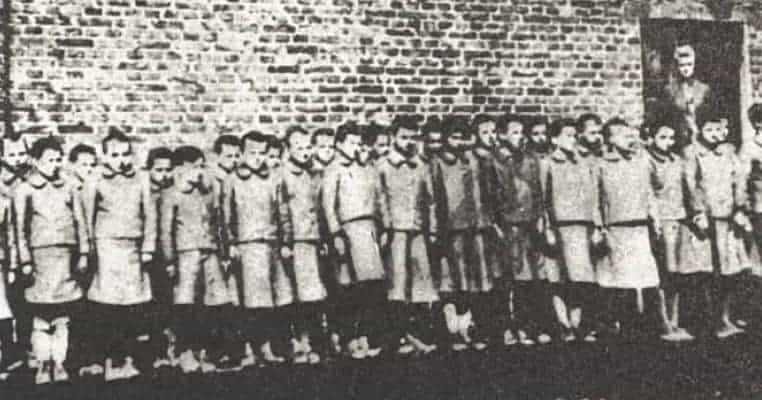On November 24, 2004, a North Carolina professor of history published an article in The New York Times describing some of the many myths regarding Oskar Schindler which were perpetrated by the film Schindler’s List, which was itself based not on a biography, but rather on an Australian novel entitled Schindler’s Ark (Schindler’s List in the United States). The historical fiction presented in the novel, and in the subsequent 1993 film, took considerable liberties with the truth in their presentation of events, according to North Carolina professor David Crowe, who wrote in the Times, “Schindler had almost nothing to do with the list.” At the time the list was prepared Schindler was in the custody of the Nazis on charges of bribery and corruption, and the list – or rather lists, as there were several – were prepared by others, including Marcel Goldberg, a Jewish spy working for the secret police.
Oskar Schindler: Reel vs Real

As is the case in many films which purport to present history with accuracy, there were many truths about Oskar Schindler and his activities and beliefs which Schindler’s List omitted, either through error or deliberately, to enhance the story and the film itself. The real Oskar Schindler was somewhat different than the character portrayed in Schindler’s List; obsessed with profits, concerned over his place in history. He was, besides being concerned with saving the slave labor in his factory camps, a leading Nazi figure who participated in the planning of the invasion of Poland. In 2001 his widow Emilie told interviewers that her late husband had been amoral, a lifelong womanizer and philanderer, who had refused to allow her to share the credit for the actions which saved almost 1,200 workers.
Here are some things about the real Oskar Schindler which weren’t presented by the film and novel Schindler’s List.
1. He was a lifelong opportunist and alcoholic

Oskar Schindler was born on April 28, 1908 in the Austro-Hungarian province of Moravia. His father was a Sudeten German who operated a farm machinery company; of his mother little is known. Oskar was a disinterested student during his primary and secondary school days and after completing his early studies he entered a technical school. In 1924, at the age of 16, he was caught forging a report card, an act for which he was expelled from the school. He was later allowed to return and complete his classes, and though he was allowed to graduate he did not complete the preliminary examinations which were required to allow entry into a university level of study. Instead he worked for his father and took various classes in technical subjects at trade schools.
As a hobby Schindler raced motorcycles, and his interest in automobiles and motorcycles led to him taking a chauffeur’s license. He married in 1928 and lived with his wife on the second floor of his father’s house. Like his father before him, Schindler demonstrated a fondness for alcohol which led to numerous arrests for public drunkenness. An extramarital affair led to two children outside of his marriage, the second of which, a son, Schindler later denied was his. He spent a year and a half in the Czech army before returning to work at his father’s business, which soon failed. In 1931 Schindler went to Prague and took a job at a bank, where he remained until 1938. From his position in the bank Schindler found that he was useful to the rising Nazi Party, and decided to exploit that usefulness to his own advantage.

